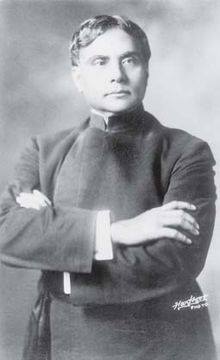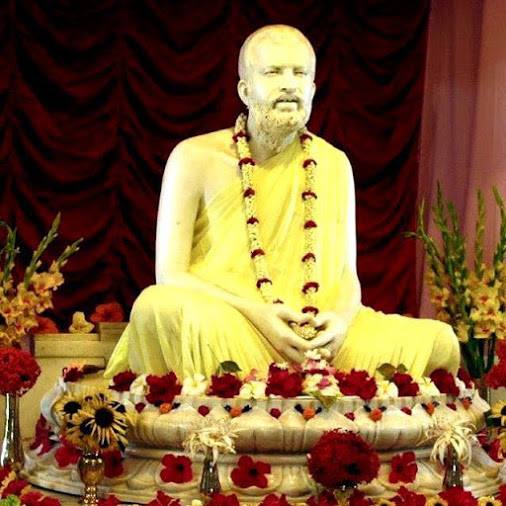Srimad Bhagavad Geeta: Her Special Charm -
1.The culture of a people must continuously serve them, nourishing their inspirations, guiding their actions and providing consolation and comfort, balance and equanimity in both their joys and sorrows.
2. A culture when sustained through its religious practices, if it has no elasticity, will come to choke the growth of the community and the people will then outgrow that culture. If an unyielding iron ring is put around a growing tree, in time, as the tree grows, the ring will be swallowed up into the very dimension and growth of the vigorous tree.
3. Our Bharatiya culture, as expressed through Hinduism, never died through all these millenniums, only because our culture had the required elasticity to embrace all the new dimensions into which our society grew during the march of time. The ideas enshrined in the Upanishads, couched as discussions held by the Rishis and their disciples in the forest vastnesses along the Ganges banks, the way of life and the eternal values that were preached therein, gathered in the minds of the people an association with the mountains, the trees, the silence, and the spirit of retirement of the jungles. In short, the Upanishadic philosophy came to carry about itself, for no fault of its own, the fragrance of the forests, the hum of the Ganges and the hymn of the eternal snow peaks. In the history of our cultural growth, thus, a time came when people felt that to live Hinduism was to live in retreat away from the rush of the people, the noise of the market-place, the struggles of the rustic fields and moving into the silence and quietude of the Himalayas.
4. Such a dangerous concept was prevalent not only among the unintelligent and the uninitiated, but even the educated, and the well informed men of action themselves shared in this national misconception of their own life giving culture. Arjuna himself felt the need for renouncing the world and refusing to fulfil his duties towards the community in order to retire into the silent arbours of contemplation and meditation. This is against the very dynamic spirit of the Hindu culture, against the very national security of the country, against all the material welfare of our people. It is at such a time of a crucial cultural crisis in our country, the genius of Shri Veda Vyasa produced the Bhagavad Geeta all through keeping his pen faithful to the fundamental thoughts of the Upanishads, their sane conclusions, their demonstrated theories and their spectacular achievements.
5. Here in the Bhagavad Geeta, we find a practical hand – book of instruction on how best we can reorganise our ways of thinking, feeling and acting in our everyday life and draw from ourselves a larger gush of productivity to enrich the life outside and around us, and to emblazon the subjective life within us. As we proceed on into our serious study of the Geeta, chapter by chapter, we shall find how she unfolds a way of life by living which we can grow to be socially more productive men and individually more balanced and tranquil, pursuing our life at peace with ourselves.
6. Without this inward balance and the readiness to act well in the world outside, how can an individual ever successfully face his own problems in life? And when each individual fails to face the challenges outside him, since the community is made up of individuals, the community will not be able to face its own or the nation’s problems.
7. Thus ‘life’ is a problem only when we know not how to meet the life’s challenges rising around us. When that ‘knowledge’ is revealed to us, we know the solution, and then the problem is no more to us threatening or despairing. Prince Arjuna of the Bhagavad Geeta represents in himself the confused and the desperate youth the world over. The Pandava Prince is painted in the Geeta as suffering from the universal disease of all young hearts the problem – phobia — to take things and happenings as problems where there are none and to feel terribly despaired of them.
8. In the Bhagavad Geeta, the man making science of the Uapnishads is brought out of the forests to serve us where we are suffering — in the market place, in the slum huts, in the drawing rooms, in the commune, and at the barricades! The outstretched hands of Mother Geeta, ready and willing always to lift all intelligent young hearts from their dirt and filth, are today often ignored in our utter confusion of mind. We are today totally ignorant of the security which the Geeta’s motherly embrace can provide and the divinity of her reviving touch. These are times when religion must march out of the forests and temples, churches and mosques, Gurudwaras and Vihars into places where man is striving in his despair and turning sour in his incorrigible cynicism and impossible disillusionments.
9. The Geeta is a readymade textbook which serves us where we are; whoever we may be, whatever may be our problem, irrespective of place and time, caste and creed, the Geeta serves us. This is the special charm of the scriptural textbook-the Bhagavad Geeta.
Swami Chinmayananda





Comments
Post a Comment